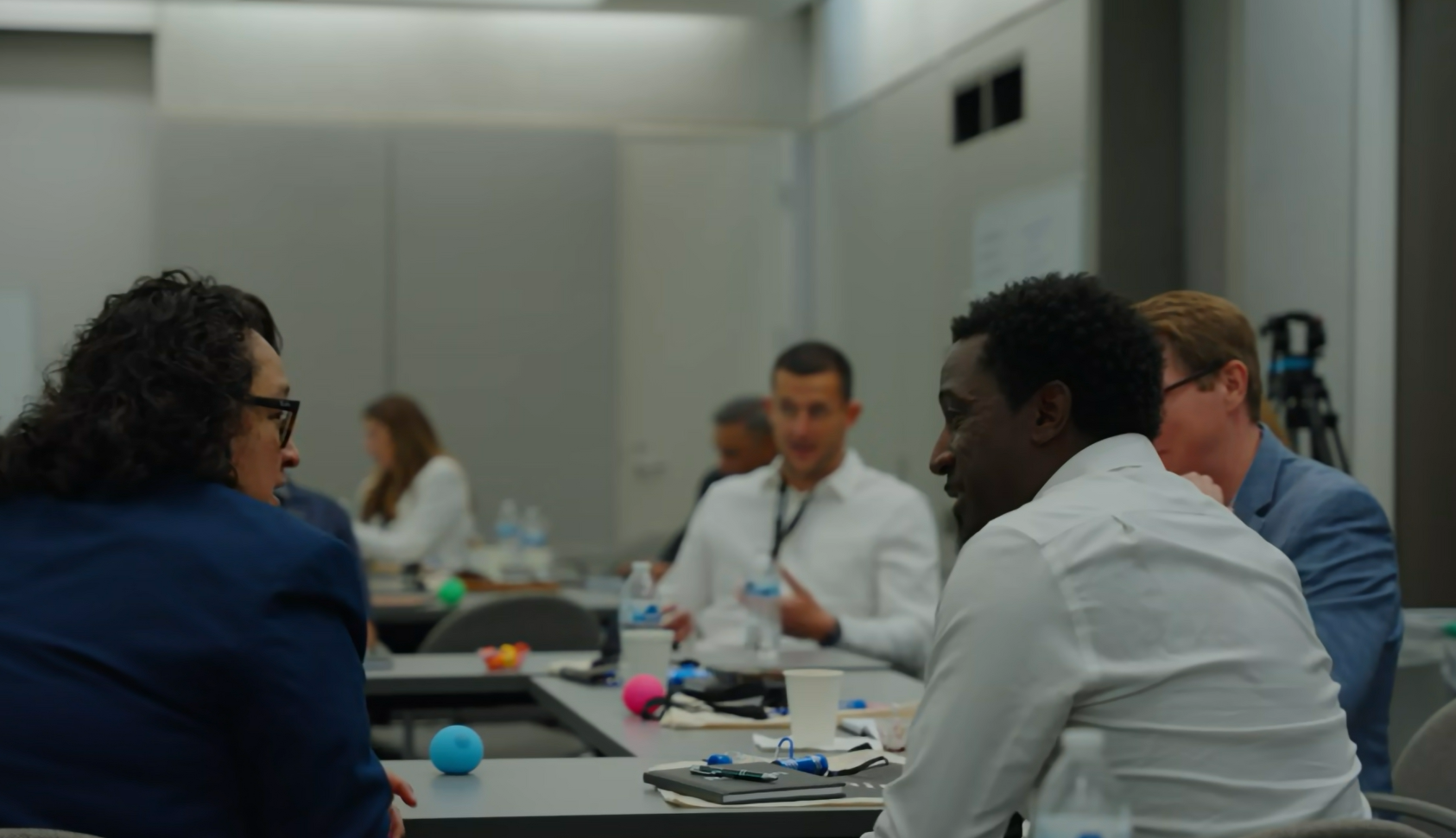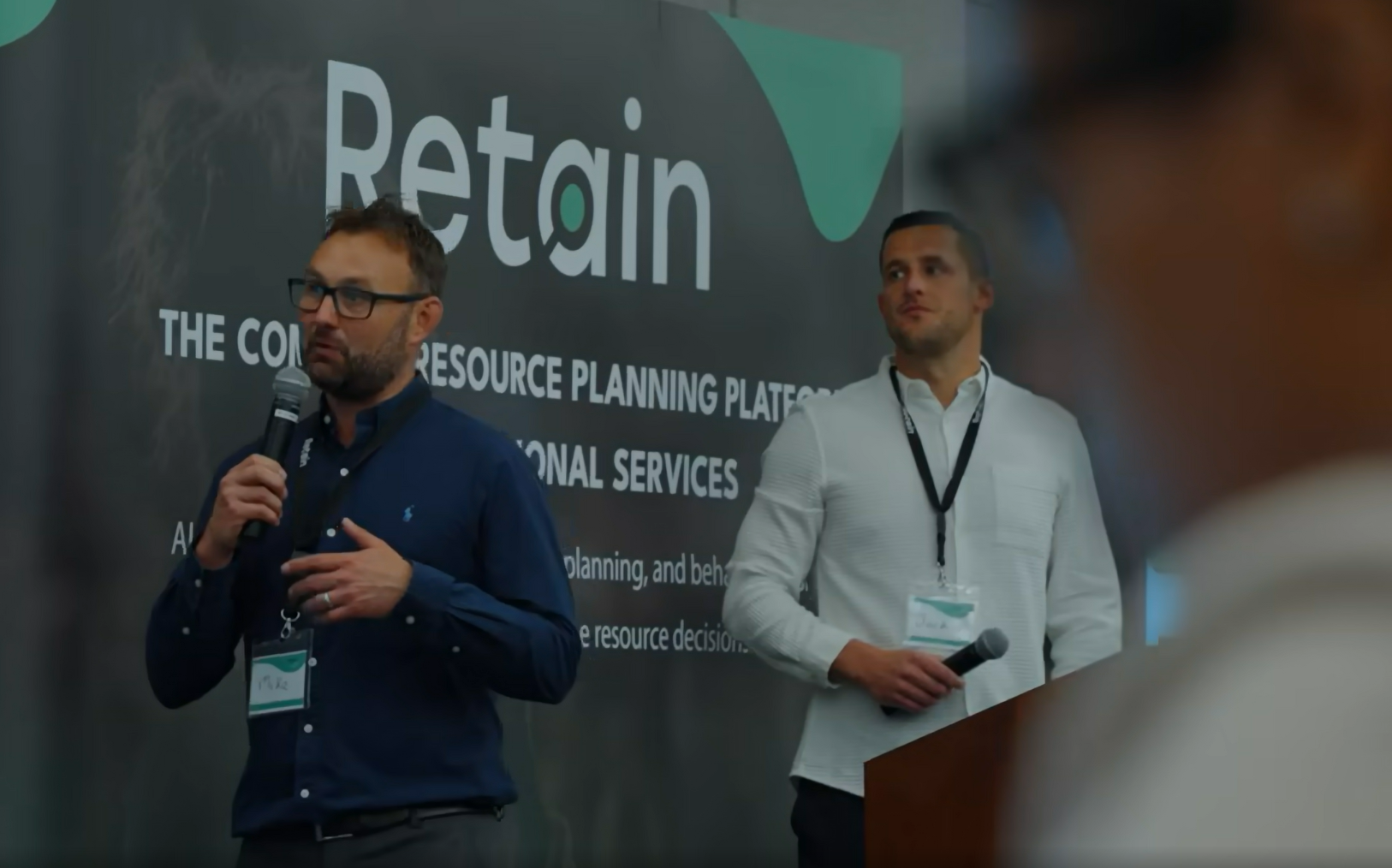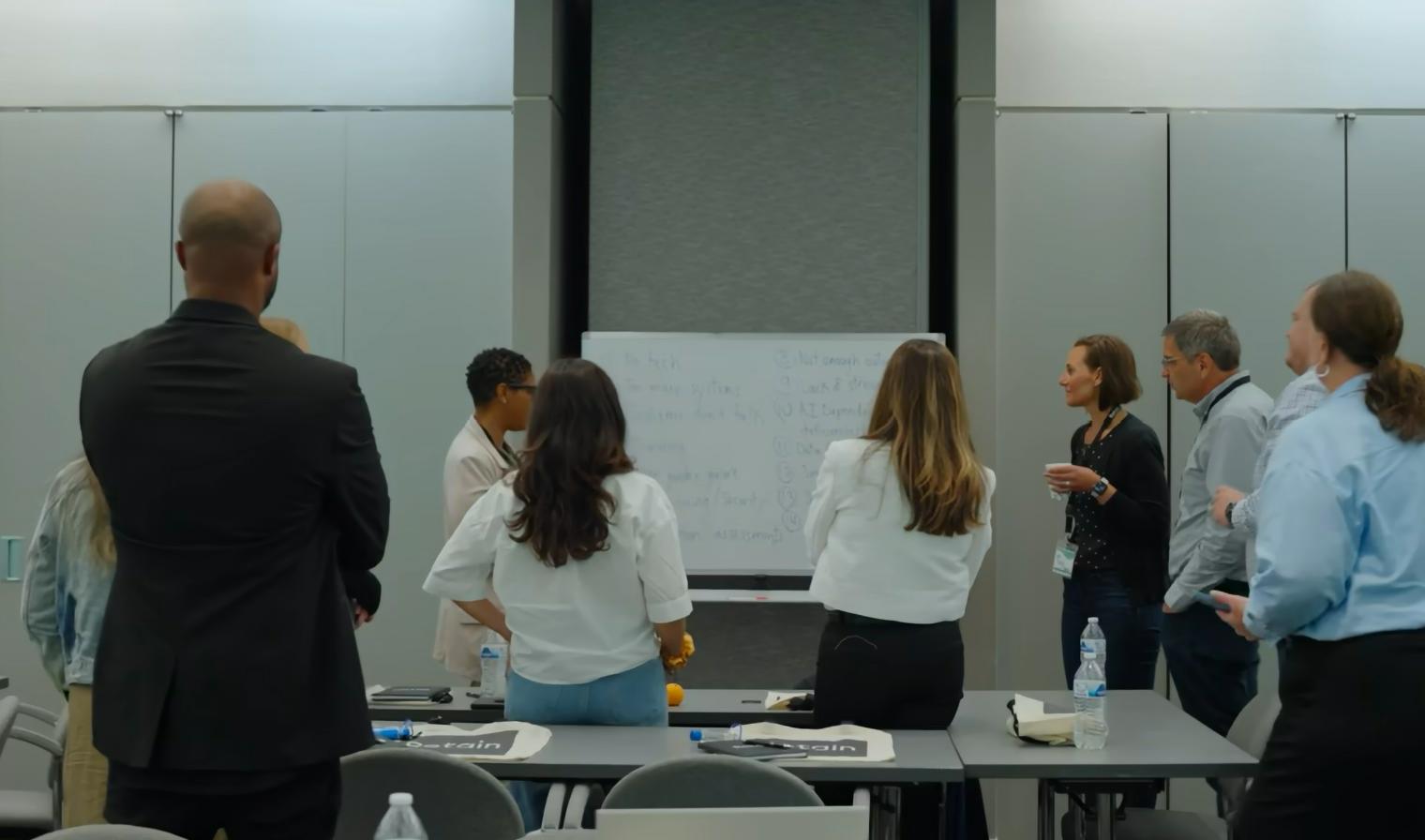We gathered 30 resource management professionals in Detroit last month. Within an hour, they'd filled a whiteboard with challenges. The usual suspects surfaced: challenging utilisation targets, shadow resourcing, and high attrition rates.
The trouble is most resource management initiatives focus on one area. Usually technology, because it's easiest to budget for. Install a new system, train people, problem solved. Except you've just digitised broken workflows.
But the companies who were winning had figured out three elements work together or they don't work at all: people, process, and technology. What emerged is a framework already working for organisations who've cracked the code.
Why traditional resource management approaches fall short

Most organisations approach resource management as if it were three separate problems. HR owns the people side. Operations handles the processes. IT manages the technology. Everyone stays in their lane.
But this means that while you fix utilisation rates with better forecasting, people are now burning out. Alternatively, you might implement a new scheduling system, but adoption is poor because nobody has changed how work actually gets done. Or you might invest in training programmes, but the underlying processes still waste everyone's time.
One workshop participant put it perfectly: "We keep solving the same problems over and over because we're only addressing part of the issue.”
The numbers back this up. Companies focusing on single-pillar solutions see temporary improvements that plateau quickly. Install new software without changing processes? You've just digitised the chaos. Redesign workflows without considering whether people actually want to use them? Good luck with that rollout.
What's expensive is the constant cycle of fixing, breaking, and fixing again. The workshop participants knew this intimately. They'd lived through multiple "solutions" that promised to be the answer but only shifted problems around.
Pillar 1: People - the human foundation

The people challenges that came up in our workshop weren't surprising. Attrition rates at all time highs, skill gaps widening faster than L&D budgets can close them, and burnout from constant overbooking. The same resource management challenges you're probably dealing with.
What was interesting was how the successful companies talked about these problems differently. They weren't trying to manage people like resources. They were trying to match people with work that actually made sense for them.
Beyond basic scheduling
Take skills matching. Most systems can tell you who's available when. The companies that were winning could tell you who was available, wanted to work on this type of project, and would actually be good at it. Small difference, massive impact.
One participant from a global consultancy explained it: "We stopped asking 'who can we put on this?' and started asking 'who should we put on this?'" As well as tracking technical skills they track project preferences, career goals, and even team dynamics.
Career visibility changes everything
The retention issue kept coming up. Good people leave when they can't see where they're going. The companies with low attrition had figured out how to make career paths visible through their resource planning.
They're scheduling people toward something. Someone wants to move from audit to advisory? The system tracks that goal and surfaces relevant opportunities. Junior staff can see what skills they need to develop and when they'll get the chance to use them.
The autonomy factor
Here's something that surprised us. The most effective resource managers were giving up control. They'd built systems where people could request assignments, block out development time, and even flag when they needed a break.
One partner mentioned their "decompression projects" - lighter assignments that people could request after intensive engagements. Sounds soft, maybe. But their utilisation rates were higher than firms that just kept pushing people harder.
The companies getting this right understood something fundamental: people perform better when they have some say in what they're doing. The technology and processes should enable that choice, not eliminate it.
Pillar 2: Process - the operational backbone

Process problems sound boring until they're costing you money. One workshop participant calculated that their team spent 16 hours a week just trying to figure out who was available for what. That's nearly half a person's job dedicated to something a good process should handle automatically.
The process challenges that surfaced included shadow resourcing, where people make their own deals outside the system, communication breakdowns between departments, and change initiatives that die because nobody defined what success looks like. Standard things that somehow never get fixed.
The transparency problem
Shadow resourcing came up in every conversation. Partners making side deals, resources getting double-booked, planning teams finding out about commitments after the fact. It happens because the official process doesn't work fast enough or well enough for how business actually gets done.
The companies that had eliminated shadow resourcing made their official processes faster and more flexible than the workarounds. When the right way is also the easy way, people use it.
Clear expectations, real accountability
Here's what we found interesting about accountability. Instead of monitoring everything, successful companies figured out the three or four things that actually predicted success and focused on those.
One firm simplified their entire resource planning process to answer four questions: Do we have the right people? Are they available when we need them? Do they want to do this work? Can we deliver profitably? Everything else was noise.
They also had what one participant called "process champions" - people whose job wasn't just to follow the process but to improve it. When something wasn't working, these champions had the authority to change it without waiting for a committee.
Data-driven adjustment
The companies getting process right were constantly tweaking things based on real feedback. They'd built feedback loops into the work itself. After each project, quick questions: Did the resource planning work? What would you change? Simple stuff, but they actually acted on the answers.
Pillar 3: Technology - the strategic enabler

The technology complaints were predictable. Systems that don't talk to each other. And data living in six different places. Interfaces that make people want to go back to spreadsheets.
But the companies that had figured out technology were using tools that actually worked for how their people wanted to work.
Integration that actually works
The single biggest technology win wasn't AI or automation. It was getting systems to share data properly. When your resource planning system can pull from HR records, project management tools, and financial systems without manual updates, everything else gets easier.
The key thing is starting with what decisions people needed to make, then working backwards to what data they needed to make them. Not the other way around.
User experience decides everything
Here's what determines whether technology adoption succeeds: do people actually want to use it? The fanciest features don't matter if the basic workflow feels like punishment.
The successful implementations had obsessed over small details. How many clicks to schedule someone? Can you see availability and skills on the same screen? Does the mobile version actually work?
AI that augments, not replaces
The AI conversation was interesting. The companies seeing real value were using it to surface better options for humans to choose from.
The technology wasn't making decisions; people still chose who went where, but they had better information to work with.
The pattern was clear: technology succeeds when it makes people more effective at what they already want to do. When it tries to change how people fundamentally work, it usually fails.
When all three pillars align

Here's where it gets interesting. The companies that were winning have figured out how to make all three work together.
Take skills development. The people side wants career growth opportunities. The process side needs a way to track and plan for skill gaps. The technology side requires systems that can match current skills with future needs. When these align, you get something powerful: people actively developing skills the business actually needs.
The math is straightforward. Fix utilisation rates by 5% through better technology, and you get a 5% improvement. But when technology surfaces better matches, processes make those matches happen faster, and people actually want the assignments, you might see 15% or 20% improvement.
The competitive reality
Here's what became clear in our conversations: this isn't optional anymore. The companies that master the three core resource management pillars are attracting better people, retaining them longer, and winning more profitable work.
The ones still treating these as separate problems are falling behind. Not dramatically, but consistently. Death by a thousand small inefficiencies while their competitors get smoother and faster.
Wrap-up
The companies in our workshop who were winning had one thing in common: they'd stopped treating people, process, and technology as separate challenges. They understood these elements either work together or they don't work at all.
The cost of staying siloed is getting higher. Not just in wasted time or missed opportunities, but in losing good people to companies that have their act together.
If you're serious about resource management as a competitive advantage, start thinking about how your people initiatives, process improvements, and technology investments can reinforce each other.
Want to see how this looks in practice? We'd be happy to show you how organisations are building integrated resource management systems that address people, process, and technology simultaneously. You can book a demo here.


